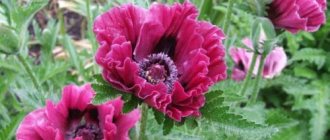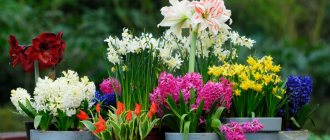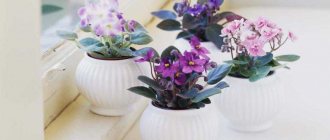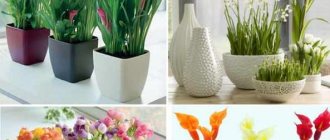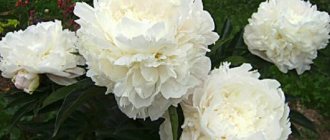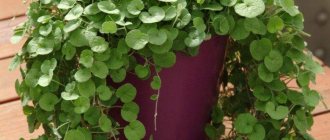Almost all of us have house plants. Green pets give us their beauty, improve health and mood, and purify the air. But, in order for the flower to look great and delight the owner, you need to take care of creating the best conditions for its maintenance.
Choosing a pot for a home plant is one of the very first and most important steps in home floristry. This is exactly what we will talk about in the article. You will learn how to choose a flower pot and what to pay special attention to when buying a container for a plant. So let's get started.
Pot or planter
For experienced flower growers, the question of what is the difference between a flower pot and a flowerpot is completely obvious. But many novice florists sometimes cannot distinguish one from the other and, as a result, acquire something completely unnecessary to them.
The most important difference between a flowerpot and a flower pot is their functional purpose. A pot is a vessel in which a plant is planted. A flower pot is a decorative container, its main task is to hide an unattractive flower pot.
[!] Translated from French, cache-pot means hidden pot
It is very easy to distinguish between a pot and a flowerpot when purchasing, despite the fact that at first glance they are exactly the same. The pot has one or more drainage holes at the bottom and a separate tray for draining excess water. A flowerpot is a solid vessel without a tray or holes.
If you need a container specifically for planting a plant, your choice is a flower pot. If your plant has already been planted and you just need to decorate unattractive flower dishes, pay attention to the flower pots.
How to choose a plant pot
So, you have decided that you need a flower pot in order to plant the plant directly in it. Let's start choosing a pot.
At first glance, it seems that this is not at all difficult, but when you see how many options the stores offer, you can easily get confused and buy a container that is not suitable for your plant. What do you need to know when purchasing a flower pot?
When choosing floral dishes, first of all you need to remember that a flower pot is a home for a plant. That is why a flower pot must combine both beauty and benefit. First, let's talk about the benefits.
Flower pot sizes
Dimensions, namely the height and diameter of the container for the plant, are one of the main criteria when choosing a pot. It's simple: the larger the plant, the larger capacity it needs.
To plant young plants, purchase small containers.
[!] If you plan to replant the sprout frequently in the future, you can use plastic cups
When planting adult flowers, choose pots larger than the previous container: mentally add 2-3 cm in radius and below to the size of the old pot. The new container should completely accommodate the root system of the plant, drainage about 2 cm high and the required amount of substrate. The universal formula for choosing a flower pot says that the height of the container should be a third or fourth of the total height of the plant.
There is no need to buy flower pots for growing: usually houseplants do not like overly spacious containers, and some of them, for example anthurium, spathiphyllum, aglaonema, even feel good and bloom only in cramped conditions.
Flower pot shape
It is no secret that the root system of each plant is individual - these include long roots going deep into the soil (cacti, palm trees, various types of citrus fruits) and fibrous, branched roots located near the surface of the earth (geranium, begonia, chrysanthemum).
In order for the plant to grow and develop normally, it is necessary to select dishes in strict accordance with the shape of the root:
- for plants with long roots - high and narrow containers
- for plants with fibrous roots - wide and shallow
If it is not possible to choose the ideal bowl, choose a universal option - standard pots (the height and diameter of the upper ring are the same) are suitable for most plants.
Various shapes of flower pots
Materials
Currently, florist shops offer a huge selection of flower pots from a wide variety of materials: ceramics, plastic, glass, metal. Each of these materials has both pros and cons, which a novice gardener may not even be aware of.
Ceramic (clay) flower pots are classics that have stood the test of time. Planting plants in clay bowls first began in Ancient Egypt, and then this tradition was picked up in other countries. Clay is an almost ideal material for planting, and clay pots have a number of undoubted advantages:
- variety of shapes and designs, thanks to the plasticity of clay and various options for its processing
- stability and optimal weight
- the possibility of evaporating excess moisture and ensuring the flow of oxygen to the roots of the plant due to the porous structure of the clay
But, despite the obvious advantages, there are also some disadvantages of ceramic pots, for example:
- fragility
- high price
Ceramic flower pots
Plastic flower pots are a fashion trend in recent years. Store shelves are literally littered with plastic bowls and an increasing number of flower growers are choosing them. What attracts house plant lovers?
- low price
- variety of shapes, colors and sizes
- practicality in use and care
The disadvantages of plastic pots include:
- light weight and instability
- lack of breathable properties of the material: the flow of air and evaporation of water in the substrate is difficult, which can lead to the appearance of root rot
Plastic flower pots
Glass pots have not yet become widespread, since glass is not the most suitable material for planting plants: it breaks easily, just as plastic does not allow air to pass through. However, due to the transparency of glass, such pots are well suited for placing orchids and other plants whose roots participate in the process of photosynthesis.
Metal containers for planting plants are an even more exotic option, rarely found in flower shops. Despite the high decorativeness, such floral dishes have too many disadvantages: they do not allow air to pass through and retain moisture, certain types of metal easily rust when in contact with water, and in addition, one can note the high cost of these products.
Glass and metal flower containers
Basic rules for planting indoor plants
As in any other matter, to get a good result from planting indoor plants, you will have to take into account some rules for performing the procedure.
The main ones include the following:
- Optimal pot sizes. The container for seedlings should correspond to the size of their root part, and if you are going to sow seeds in small pots, be prepared to quickly replace the purchased option.
- Suitable soil. When choosing a substrate for a flower, be sure to take into account the requirements of a particular plant for alkalinity and soil density (especially when preparing the soil mixture yourself).
- Maintaining the required soil properties. To avoid compaction of the substrate and prevent “clogging” of the plant root system, before planting it is worth mixing the substrate with sifted sand, cleaned small pebbles or crushed charcoal. In some cases, foam beads are used to maintain looseness.
- Selection of ready-made soil mixture. When buying a store-bought substrate, be sure to pay attention to its composition and the fertilizers present. Also, do not forget to check the suitability of the product, because expired options will not have the required nutritional value.
- Preparing the soil for replanting. It is better to open the package with soil in advance, and not just before planting the plant. The nitrogen accumulated inside must come out, otherwise it can seriously harm the roots of the flower. Homemade soil mixtures must be steamed in the oven at a temperature of at least 80 °C, and in some cases the same will have to be done for ready-made varieties of soil.
- Compliance with planting technology. Depending on the type of root system of indoor plants, the appropriate planting depth is selected. In some cases, if the flower is buried too deeply in the soil mixture, the flower lags behind in growth and is not very decorative.
- Creation of optimal temperature conditions. Each plant has its own requirements for environmental conditions, therefore, during and after planting, temperature, humidity and lighting must comply with the stated standards. Think in advance which room of the house or apartment is best suited for placing a pot with a plant .
Did you know? According to the teachings of Feng Shui, each plant has its own unique energy and can influence the well-being and emotional state of the inhabitants of the house. For this reason, it is better not to place lemons or chamedoras in a room where two children live, as they will only intensify already frequent conflicts. At the same time, the Uzumbara violet would be an excellent option for organizing a green corner.
How to choose a flowerpot
We have already found out above that the plant is not planted directly in flowerpots, which is why there are no strict criteria when choosing flowerpots. There are only two parameters worth noting: the size of the flowerpot and the material from which it is made.
The dimensions of the pots depend only on the size of the container directly into which the houseplant is planted. In order to choose a suitable flowerpot, before purchasing, use a ruler to determine the height, diameter of the lower and upper rings of the flower bowl, and then add 1-2 cm to these measurements in each dimension. The resulting numbers will be the size of the flowerpot you need.
As for the materials from which the flower pots are made, you can focus on their utilitarian properties and your taste. So, for example, a flowerpot made of plastic is light and durable, while a flowerpot made of glass or ceramics is heavy and fragile.
Volume and dimensions of the flowerpot
These parameters play an important role when choosing the “habitat” of a plant. When purchasing a pot, keep in mind that large, stable containers are suitable for massive tree-like and palm-shaped crops. Containers with flowers are placed on the floor or on specially equipped stands.
Also, the choice of pot volume depends on the pet’s roots. When replanting seasonally, choose a pot that will have a 4 cm margin from the walls. Succulents (euphorbia triangular, crassula, aloe vera, Decembrist, etc.) are planted in a wide, low pot.
Many plants grow well in flowerpots with a size corresponding to the classic proportion (diameter equal to 2/3 of the height of the container). Pots with a narrowed top are not suitable for almost all crops, since replanting can damage the roots. For a tall flower with a powerful crown, choose a container with a wide base and a height of at least one third of the stem.
Flower pots and flowerpots as an interior element
One of the most important factors when choosing flower pots and flowerpots is the compatibility of the design of the plantware with the design and style of the interior of the room. Such a seemingly small thing - a flower pot - can decorate your living room, bedroom or kitchen, and vice versa. To ensure that the container with the plant does not look like a foreign object in your interior, follow a few simple rules:
1. Pots or flower pots with flowers must fully match the style of the entire room as a whole. For example, a flower pot with a laconic and simple design will fit perfectly into a room decorated in Japanese, high-tech or minimalist style. A richly decorated bowl with monograms and reliefs is perfect for a classic or baroque interior. And bright pots with cheerful designs would be appropriate in a nursery.
2. In order for the container with the plant to fit successfully into the existing interior, it is necessary to pay attention to its color design. If you want plants to be an accent spot in the interior, choose pots in rich, contrasting colors. Alternatively, the color of dishes with plants can overlap with other bright details: sofa cushions, posters, textiles, and so on.
In contrast to contrasting compositions, there is nuance. The technique is suitable in a situation where there is no need to highlight the floral dishes. In this case, the color of the bowls should match the main interior color, for example the color of the walls.
3. If plants are arranged in groups or in a row indoors, the containers in which they are grown must be compatible with each other. This rule applies to all flower containers located in the same room.
The simplest and most win-win option, applicable if the plants are the same in size, is to use pots of the same shape and size.
However, if you want variety, some combination is possible. For example, in the case where plants in a room are of different sizes, pots of different capacities, but of the same color, would look good. You can also place several multi-colored flowerpots of the same shape. At the same time, the palette of floral dishes should organically fit into the palette of the existing interior. It is easy to pick up flower pots or flowerpots from one collection in specialized florist shops or supermarkets.
More complex combinations of shapes and colors require a professional approach and consultation with an interior designer.
4. When decorating the interior of a room with plants, do not forget about non-traditional solutions, such as hanging or free-standing pots or cache-pots. This option for placing flowers is perfect if there are not enough horizontal surfaces or you don’t want to clutter them up too much.
For hanging and free-standing pots, ampelous (climbing and hanging) plants are usually recommended, but, in fact, almost any type of houseplant fits perfectly in containers of this type. The only exceptions are, perhaps, very large and massive specimens (palm trees, ficus, monstera, zamioculcas, etc.).
5. When choosing the palette of a flower pot, you need to take into account the color of the plant placed in it. For example, non-flowering plants can be placed in pots of bright colors. Conversely, bright dishes, the rich shade of which conflicts with the color of the flower, look inharmonious. In this case, pots in neutral shades will be appropriate, which will perfectly highlight the beauty of a flowering plant: white, gray, beige, terracotta, coffee.
If you still want a riot of colors, pay attention to the combination of shades of the flower of the plant and the pot. A few examples of what designers consider unsuccessful combinations:
- soft pink flowers and a bright red, yellow or orange pot
- delicately colored silver-green or pink-green foliage and deep green pot
- plants with a pronounced pattern on the leaf blade and a green pot
Schefflera
Schefflera can be found in the tropics of any part of the planet. In nature, it grows to the size of a tree; decorative species are more compact, reaching 2 meters in height.
Flower growers love it for the shape of its leaves - when gathered together they look like an open palm or an umbrella. They can be dark green or with yellow and white stripes. Sheflera is grown like ficuses - as a small upright tree or I shape the crown so that it becomes a lush bush.
In any case, this is a large plant and it needs a tall pot. Experienced flower growers advise replanting Schefflera each time in a much larger pot. A lush crown requires a lot of nutrition and moisture, so there must be a lot of soil.
High technologies at the service of florists. Unusual flower pots
As in all areas of our lives, progress does not stand still, so in floristry more and more new materials and technologies are constantly appearing. This is especially true for dishes for house plants. Original flower pots with additional functions can now be purchased not only in specialized places, but also in supermarkets or small shops. What do inventors offer us?
Pots and flowerpots with automatic watering
Such containers for house plants are very convenient for busy and forgetful people, as well as for those who often leave home. Using auto-watering technology, you don’t have to worry about frequently watering your flowers and only occasionally replenish the water in a special tank.
There are several options for pots and flowerpots that use self-watering technology:
Ceramic pots with automatic watering.
One of the properties of clay - its porous structure - is used for flower containers with automatic watering. In the middle of the pot there is a reservoir into which water is poured. If the soil dries out, the reservoir allows enough water for the plant to pass through. If the ground is well moistened, water does not enter the soil. This version of automatic watering was developed and implemented by industrial designer from the USA Joey Roth.
Plastic pots with automatic watering.
Plastic bowls with automatic watering usually consist of two containers inserted into one another, with the plant being planted in the smaller one (inner container). There is a fairly large gap between the containers into which water is poured. Through the bottom, water in the required quantity enters directly into the soil to the roots of the plant.
Manufacturers of such dishes promise that plants planted in them can be left without watering for two weeks to three months. The only drawback is that the automatic watering system only works if the plant is mature and has a voluminous rhizome (if the root of the plant is not developed and is located at the surface of the soil, it will not receive enough moisture, since the water for irrigation comes from below) Young plants must be watered in the traditional way .
Automatic watering technology in flower pots
Florariums, paludariums
Florariums (glass containers for growing plants) and paludariums (large florariums suitable for several groups of plants) are becoming increasingly popular among exotic lovers.
Plants in florariums look very impressive and are a real decoration of the interior. However, there are several limitations that an experienced florist should keep in mind:
1. There are only a small number of houseplant species that can grow in a glass container. These are mainly succulents, anubias, some mosses and ferns 2. The glass walls of the florarium greatly enhance the power of sunlight and can cause leaf burns. That is why it is not recommended to place such compositions in direct sunlight 3. Florariums and paludariums are quite complex systems and require increased care
Pots with lighting
One of the most spectacular new products of recent times is interior flower pots with lighting. Typically, such flowerpots are made of matte translucent plastic, between the walls of which there are luminous elements. The power source for the pots is electricity or built-in batteries. Inside the flowerpot you can place a container with a plant.
Pots with lighting look great both indoors and on outdoor terraces, being both a landscaping element and an additional source of light.
Silicone pots
The idea of creating silicone containers for growing flowers came to the mind of the young Italian designer Emanuele Pizzolorusso at a time when he was observing the process of collecting garbage in plastic bags. The designer noticed that to make it easier to fill the bags, workers bend their edges, thus changing the volume of the plastic container. The artist decided to translate this principle into the production of containers for house plants and created silicone pots that can change size as the plant grows. Thanks to the flexibility of silicone, the edge of the pot can be bent and the height of the bowl can be reduced. When the flower grows, you need to return the edge to its place and the pot will become tall again. Since the silicone used to make the bowls is quite dense, the container holds its shape well and does not deform.
Symbiosis of plants and interior items
Why use free-standing pots when you can integrate them into tables, benches, shelves and even wall tiles - this idea has occurred to many designers. The result was very interesting and practical pieces of furniture and interior design, combining several functions.
Perhaps the only disadvantage of such systems is the difficult planting and care of plants, which is why you should choose only the most unpretentious specimens for planting.
Types of pots
Among the huge variety of flower pots on the market, you need to choose exactly the one that will match the interior of the room and the type of plant.
We recommend reading:
Beautiful flower beds of perennial flowers: ready-made patternsHow to add color to your winter garden
- Conifer diseases - we identify and treat
If you look at the photo of flower pots, you will notice that modern containers for flowers are in no way inferior to each other, regardless of the material of manufacture.
How to make a flower pot or flowerpot with your own hands
If you prefer things made by yourself, try your hand at the art of making flower pots and plant pots.
Making a pot at home is somewhat more difficult than decorating a flowerpot, but it is quite possible, and the result will certainly please you.
DIY pots made of plaster and concrete
What you will need: cement-sand mixture or plaster, water, two plastic or wooden molds of the same shape, but different volumes
Thoroughly mix the gypsum or cement-sand mixture with water, in a ratio of 1:1 (gypsum-water) or 1:3:2 (cement-sand-water). Prepare plastic (wooden) molds - grease the inside of the larger container and the outside with less oil. , grease or green soap. This step is necessary so that the mold can be easily separated from the cement or plaster later. Pour concrete (gypsum solution) into the bottom of the larger container, let it harden a little, then place the smaller container on top and lightly press it down with your hands. Carefully pour the remaining concrete or plaster into the gap formed between the walls of the molds. Wait for the mixture to completely harden and carefully remove the plastic molds. At the bottom of the resulting pot, drill several holes for water drainage.
Pots made of vines or brushwood . Wicker weaving is a real art, sometimes only accessible to professionals. But an ordinary person can also try his hand at wicker weaving, making, for example, a flower pot. What you will need: dry thin twigs (vine), base mold, thin wire, burlap, glue Clean the twigs, remove excess shoots. Take the base and, following the shape, braid it in a circle with the prepared branches. You don’t have to adhere to a strict pattern; intertwine the twigs randomly, from time to time fastening them with wire for rigidity. Then remove the mold and glue thick burlap inside the finished product. The resulting container can be used both as a flowerpot and as a pot for orchids.
Coconut pots . These pots are perfect for small house plants.
What you will need: coconut, hacksaw or grinder, awl or other sharp object
Choose a round coconut if you want a stable shape or an elongated oval nut if the composition with the plant will be hanging. Make holes with an awl in the places of three small depressions on the “butt” of the coconut and remove the liquid. Subsequently, excess water will drain through these holes when watering the plant. Saw off the opposite end of the coconut with a hacksaw, stepping back about one-third from the edge. Thoroughly clean the inside of the nut, removing the white edible mass. The pot is ready. If you drill additional holes on the sides of the nut, you can thread a cord through them and hang it.
Vinyl record pots . Original and functional pots are made from old vinyl records.
What you will need: vinyl records, gas or electric stove, rope, thick cotton gloves, acrylic paints, plastic primer
Thread a rope through the existing hole in the plate and secure it with a knot or metal nut so that the plate hangs freely on the rope. Preheat the stove and hold the plate above it for several minutes at a distance of 20-30 cm. Hold the plate by the rope and use gloves - hot air can burn the skin. After some time, exposure to hot air will make the plate soft. At this point, you can give the vinyl disc any desired shape, either by hand or by placing it on some kind of frame. After the vinyl has cooled and hardened again, you can paint the resulting pot with acrylic paint. For better adhesion of paint to the plate, you can use plastic primer.
***
As you can see, there are many ways to make a flower pot with your own hands, you just need to show a little imagination. Well, in the next article we will talk about decorating plant pots.



